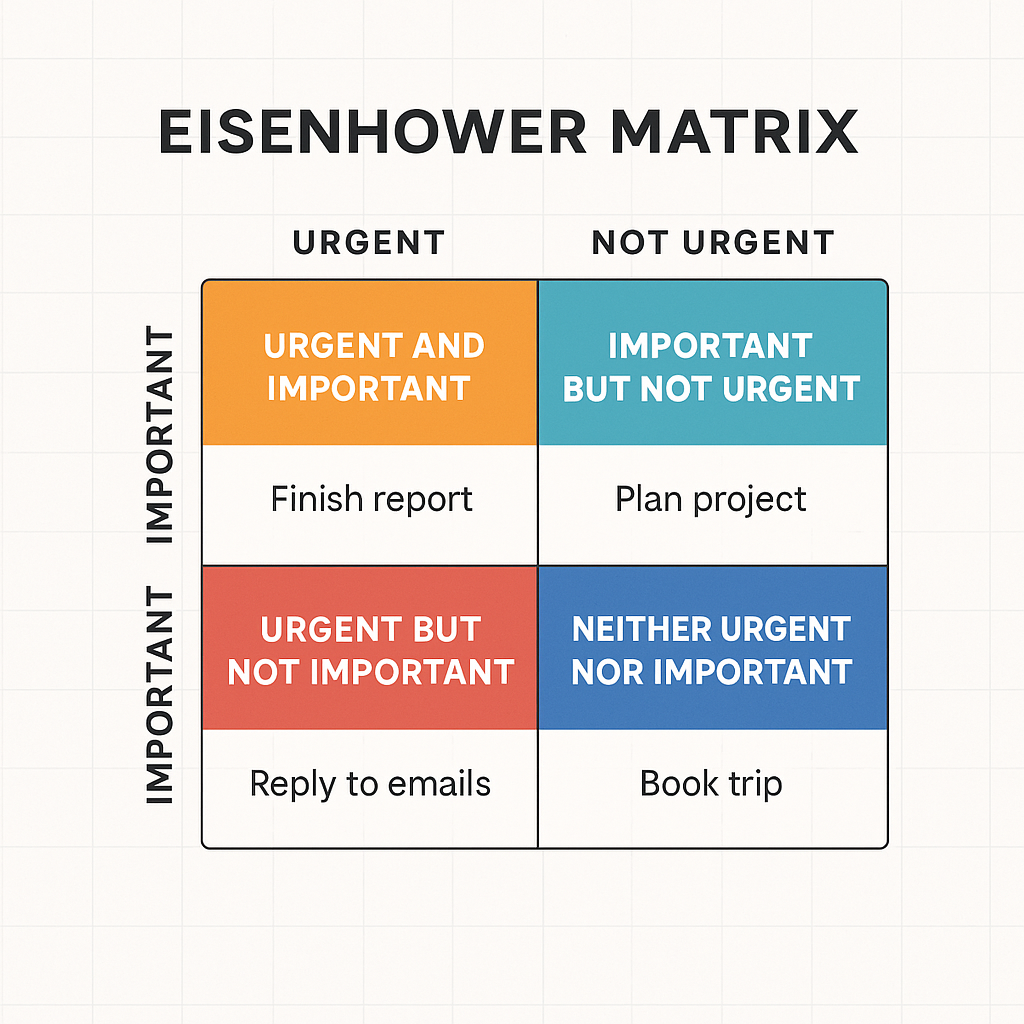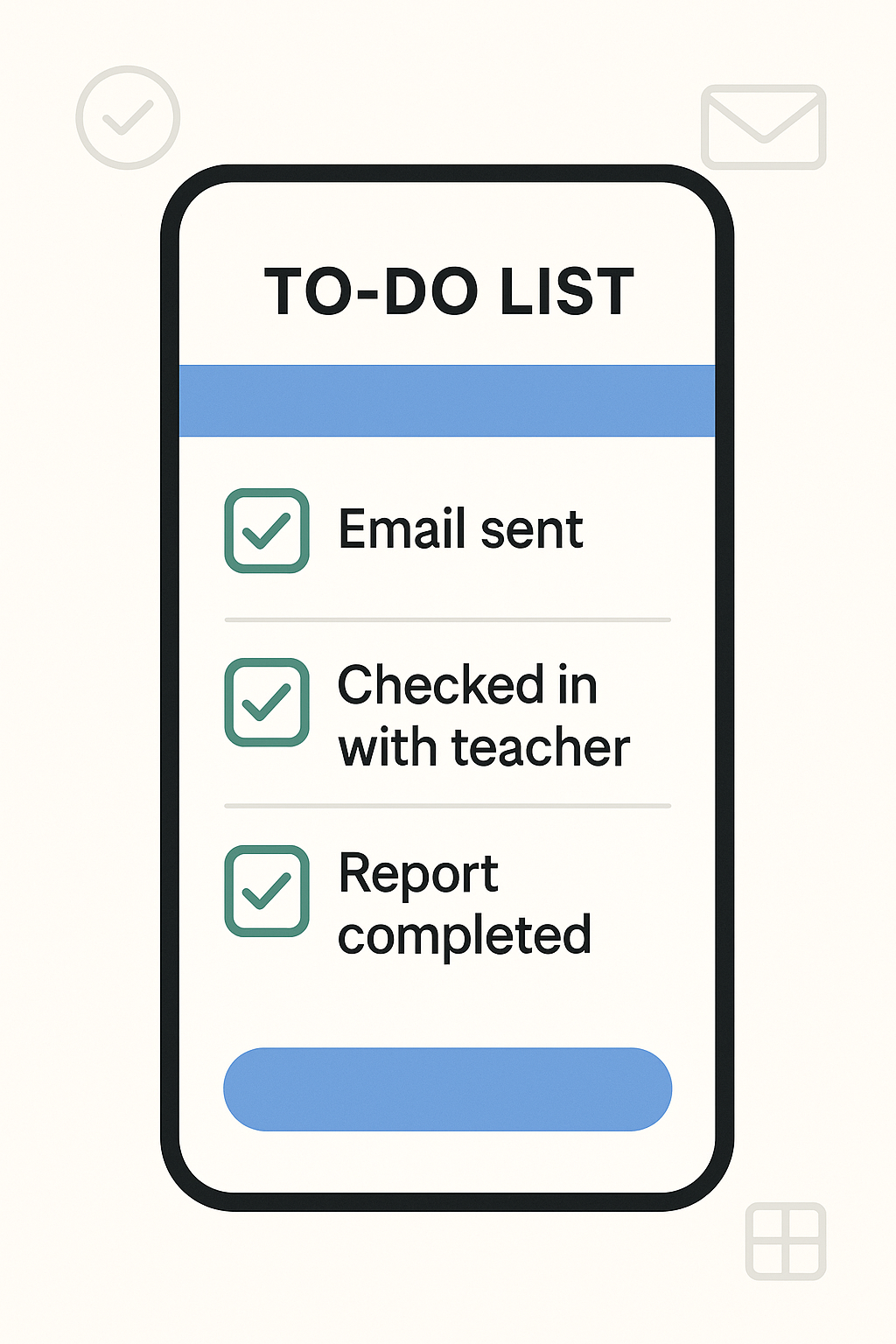If you’re an ed tech leader, your to-do list probably reads like a scroll (and just keeps growing). Every time you check off a task, three more show up. It’s not that you’re disorganized—It’s that your role is massive, and the demands never stop. You’re not alone in feeling like there’s never enough time.
This post isn’t about pretending you can “do it all” or magically clear your plate. Instead, it will help you stay motivated, focused, and grounded even when the checklist keeps expanding.
You’ll learn practical strategies for shifting your mindset, prioritizing what matters, staying productive in short bursts, and reconnecting with the purpose behind your work. Let’s dive in, because you’re already doing more than you think.
1. Acknowledge the Reality: You’re Not Failing—You’re Leading

It’s easy to feel like you’re falling behind when your task list never hits zero. But here’s the truth: unfinished work is not a sign of failure for ed tech leaders—it’s actually just the nature of leadership. Especially in ed tech, where responsibilities span everything from network reliability to digital equity to professional development, the list is never really “done.” That’s not a flaw in your performance—it’s a feature of your role.
Think of it like this: leaders don’t finish. They steer. Your job isn’t to check every box. It’s to guide your district forward with intention, clarity, and adaptability. In fact, trying to “do it all” often leads to burnout, not better results. By contrast, accepting that the work is ongoing allows you to focus on impact, not perfection.
A small but powerful mindset shift is to redefine success as forward momentum instead of completion. At the end of the day, instead of asking “Did I get everything done?” ask, “Did I help the right people today?” or “Did I move a critical initiative forward, even just a little?”
Once you stop equating a full plate with failure, motivation starts to feel more sustainable, and leadership becomes less about pressure and more about purpose.
2. Prioritize What Moves the Needle

When your plate is overflowing, the only way to stay sane is to prioritize with precision. That doesn’t mean simply choosing what’s urgent. It means focusing on what truly matters. One helpful tool for this is the Eisenhower Matrix, which divides tasks into four categories: urgent and important, important but not urgent, urgent but not important, and neither. The goal is to spend more time in that second quadrant: the strategic, thoughtful work that often gets pushed aside by daily fires.
In the world of ed tech leadership, “urgent” often looks like a broken projector or a login issue, while “important” might look like rolling out a new LMS or aligning your tech goals with instructional outcomes. One fixes today; the other shapes tomorrow. You need both, but they don’t deserve equal time or energy.
And let’s talk about one of the hardest leadership skills: saying “no” (or at least “not now”). You can’t prioritize what matters if you’re constantly reacting to everything. Setting boundaries kindly, clearly, and consistently protects your ability to lead strategically. Whether it’s pushing back on unnecessary meetings or delaying lower-impact projects, these choices aren’t selfish; they’re essential.
3. Use Micro-Momentum to Beat Overwhelm

When the big picture feels too big, the best antidote is to go small. Really small.
Micro-momentum is the practice of creating progress through tiny, intentional actions. And when your schedule is chaotic, those quick wins can be the fuel that keeps you moving.
Try this: Set a “three-a-day” goal, with just three meaningful completions per day. They don’t have to be big. They could be responding to a key email, finalizing a vendor decision, or checking in with a campus tech leader. The goal isn’t to conquer your to-do list—it’s to maintain movement and morale.
You can also lean on tools and systems that support short bursts of focused work. The Pomodoro Technique (25 minutes of work, five-minute break), batching similar tasks, or brain-dumping into a project management app like Trello or Asana can all turn fragmented time into productive blocks.
And don’t overlook a powerful emerging ally: AI. Whether you’re using tools like ChatGPT, Microsoft Copilot, or another assistant, AI can help you prioritize your workload, schedule tasks on your calendar, and even act as a sounding board when you’re juggling too much. Think of it as your personal work assistant—one that’s always available and never needs a break. A five-minute chat with AI can often clarify your next steps and reduce the weight of decision fatigue.
Progress is a motivator. And when progress comes in small, steady steps—supported by the right tools—you’re less likely to burn out and more likely to build momentum that actually lasts.
4. Build in Reflection and Wins
In the rush to keep up, reflection is often the first thing to go. But taking just a few minutes each week to pause and look back can be one of the most powerful motivation tools you have. Reflection reminds you that progress is happening, even if your list isn’t actually shorter.
Try blocking 15 minutes on Fridays (or whatever day works for you) to ask: “What did I move forward this week? What conversations made a difference? What did I learn?”
These aren’t fluffy questions—they help shift your focus from what’s undone to what’s working.
To make this stick, keep a journal or notebook—either traditional or digital—to record your reflections. Even just jotting down a few sentences each week builds a personal record of impact that you can revisit during tough stretches. If you prefer a more digital approach, use your AI assistant to document these insights. Share your responses with ChatGPT, Microsoft Copilot, or a similar tool, and ask it to store or summarize them for future review. Over time, this creates a motivational logbook that can highlight growth you might otherwise miss.
Even more powerful? Share these wins with your team. Whether it’s highlighting a teacher who implemented a new tool or recognizing your own efforts to push a project forward, celebrating small victories reinforces purpose and builds morale. You don’t need a formal award system, just consistent acknowledgment that the work you’re all doing matters.
Reflection isn’t about navel-gazing. It’s about noticing what’s working so you can do more of it and letting that clarity fuel your motivation for the week ahead.
5. Connect with a Community of Fellow Leaders

Ed tech leadership can feel isolating, especially when you’re the one everyone turns to for answers. But here’s a secret: motivation thrives in community. Talking with peers who truly understand your challenges and victories can recharge your mindset in ways no checklist ever could.
If you’re not already plugged into a network of ed tech leaders, consider joining a professional learning network (PLN), participating in local or regional meetups, or even forming a small mastermind group with peers from other districts. One excellent option is the TCEA CTOs and Technology Directors community—an active online hub where you can connect with like-minded leaders across Texas and beyond. The goal isn’t just to share resources. It’s also to share the load.
Don’t underestimate the value of informal conversations either. A quick Zoom call with a fellow tech director or a Slack group where you can swap “in the trenches” stories can be more energizing than any webinar. These moments of connection remind you that you’re not alone, that your challenges are shared, and that your work matters far beyond your inbox.
And if you don’t have someone to talk to? AI can be a temporary sounding board. While it’s no substitute for human empathy, a quick chat with your AI assistant can help you talk through ideas, get feedback, or brainstorm approaches. Sometimes just having a place to “say things out loud”—even to a bot—can help clarify your thinking and lighten the emotional load.
Ed tech leadership doesn’t have to be lonely. Surrounding yourself with others who get it can turn motivation into something sustainable, not just situational.
Key Takeaways
- You’re not failing if your to-do list never ends. That’s leadership—not a lack of productivity.
- Prioritize impact over urgency using tools like the Eisenhower Matrix and the power of saying “not now.”
- Use micro-momentum by focusing on three meaningful tasks a day and leveraging AI as a digital assistant.
- Build in reflection through journaling or AI-supported prompts to track wins and reinforce progress.
- Stay connected with fellow ed tech leaders through groups like TCEA’s CTOs and Technology Directors community and informal peer support.
You’re Doing More Than You Think
The work you do isn’t just important—it’s transformational. You’re guiding educators, supporting students, and helping entire systems evolve. Motivation won’t always come naturally, but it can be cultivated with the right habits, mindsets, and support.
Even when the to-do list grows, your leadership still counts. And you’re not in it alone.
What to Do Next
Choose one (or more!) of these steps to move from overwhelmed to energized:
- Join a network that gets it. Explore the TCEA CTOs and Technology Directors community to connect with peers who speak your language.
- Test out an AI assistant. Try ChatGPT, Microsoft Copilot, or another tool to help you prioritize tasks or schedule your day.
- Talk it out. Use voice mode in ChatGPT or Claude to speak your thoughts and let AI help you summarize and organize what’s on your mind.

